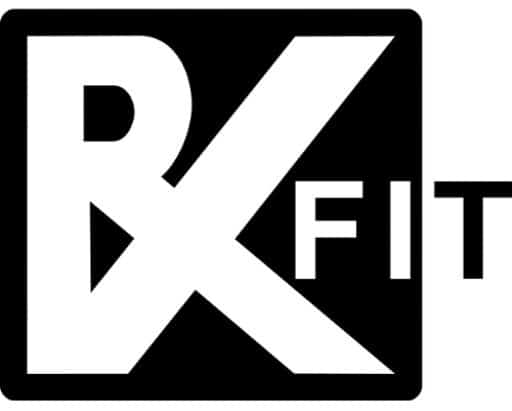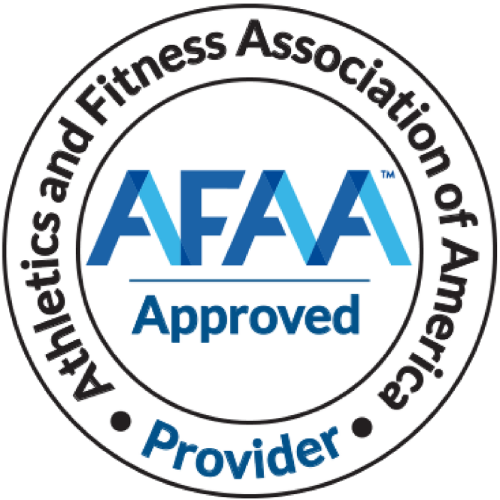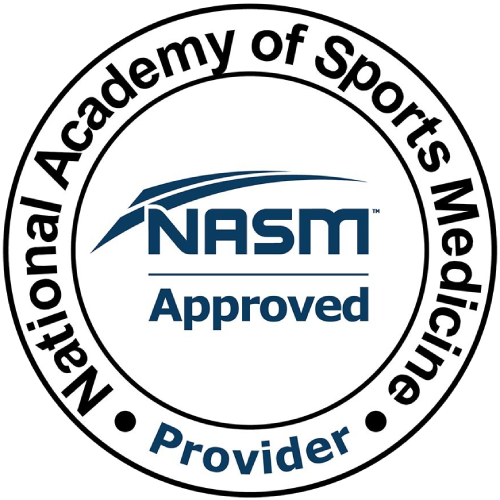Elbow pain after a workout can be a real buzzkill, right? It’s like you’ve just conquered the world with your bicep curls and push-ups, only to be humbled by the agony in your elbow joints.
Then you ask yourself, “Why do my elbow joints hurt after working out?”
Let’s delve into the importance of comprehending why those elbow joints might be singing the blues after your workout.
Understanding why your elbow joints ache after a workout is crucial for injury prevention, optimizing workouts, elbow pain treatment, and pain management. This understanding helps to empower you to make informed adjustments to your fitness routine and ensures you stay on track toward your fitness goals.
So, instead of seeing it as a nuisance, view it as an opportunity for growth and learning on your fitness journey.
Anatomy of the Elbow
The elbow joint is highly complex and essential in the human body, responsible for the flexion and extension of the forearm. It serves as the articulation point between three bones: the humerus (upper arm bone), the radius, and the ulna (two bones of the forearm).
The elbow joint allows us to perform a wide range of movements, from simple actions like bending the arm to more intricate tasks like writing, lifting objects, or throwing a ball.
Key Components Involved in Movement
Together, the following components allow for the complex and coordinated movements of the elbow joint:
- Humerus: The upper arm bone, the humerus, plays a pivotal role in elbow movement. It has two prominent bony landmarks, the medial and lateral epicondyles, which serve as attachment points for muscles and ligaments.
- Ulna and Radius: The ulna and radius are the two bones of the forearm. The ulna forms the prominent bony bump at the back of the elbow, known as the olecranon process. The radius articulates with the humerus, allowing for rotational movements of the forearm. These two bones work in concert to provide stability and facilitate various movements of the elbow.
- Articular Cartilage: The ends of the bones that meet at the elbow joint are covered with articular cartilage. This smooth and slippery tissue reduces friction and allows for smooth, painless movement within the joint.
- Ligaments: So why does my elbow hurt after working out, if ligaments are the strong, fibrous bands that connect bones to bones? In the elbow joint, ligaments play a crucial role in stabilizing the joint and preventing excessive motion. the most notable ligaments in the elbow are the ulnar collateral ligament (on the inner side of the joint) and the radial collateral ligament (on the outer side).
- Muscles: Several muscles cross the elbow joint, contributing to its movements. The primary muscles involved include the biceps brachii, triceps brachii, brachialis, and brachioradialis. These muscles work together to flex and extend the elbow, as well as to provide stability during various activities.
- Synovial Membrane: The synovial membrane lines the inner surface of the joint capsule and produces synovial fluid, which lubricates the joint and nourishes the articular cartilage.
- Joint Capsule: The joint capsule is a fibrous structure that surrounds the elbow joint. It provides structural support and helps maintain the joint’s integrity.
- Bursae: Bursae are small, fluid-filled sacs that reduce friction between tendons, ligaments, and bones in the joint. They are located in areas of high stress, such as near the olecranon process and other bony prominences of the elbow.
Common Causes of Elbow Pain
It’s important to identify the underlying cause of elbow pain and to seek appropriate treatment which in some cases may require surgical intervention. All of this to be able to stop asking “Why does my elbow hurt after working out?”
Understanding these common causes of elbow pain can help individuals take proactive steps to prevent injuries, seek elbow pain treatment, and maintain healthy elbow joints.
Muscle Strain and Overuse
So why does my elbow hurt after working out? Elbow pain often arises from the overuse of forearm muscles. The primary muscles involved in medial elbow pain are the flexors and extensors, including the biceps brachii, triceps brachii, brachialis, and brachioradialis.
These muscles are responsible for bending and straightening the elbow joint. When subjected to excessive or repetitive stress, they can become strained, leading to elbow pain and discomfort as well as chronic conditions like tennis elbow or golfer’s elbow.
We recommend strength training exercises to help combat muscular imbalances. Here are a few quick exercises that we suggest.
Impact of Repetitive Motions
Activities that involve repetitive motions of the elbow tendon forearm, such as continuous typing, playing musical instruments, or sports like tennis or golf, can strain the elbow muscles and the elbow joint. The cumulative stress from these repetitive movements can result in muscle fatigue, micro-tears, and inflammation, causing pain in the elbow.
Ligament Strain
Ligaments are critical for maintaining the stability of the elbow joint. The ulnar collateral ligament (on the inner side) and the radial collateral ligament (on the outer side) help prevent excessive side-to-side movement that leads to elbow pain.
When you have to ask “Why does my elbow hurt after working out?”, it is important to understand that, when these ligaments are subjected to abnormal stress or overuse, they can become strained or damaged, leading to instability and chronic elbow pain thereafter.
Effects of Overexertion on Ligaments
So why does my elbow hurt after working out? Overexertion or sudden forceful movements, such as throwing a baseball or heavy lifting, can strain the ligaments in the elbow. Research shows that athletes, especially baseball pitchers, are particularly prone to this type of elbow injury and experiencing elbow pain.
In chronic conditions like tennis elbow otherwise called lateral epicondylitis, triceps tendonitis, and golfer’s elbow otherwise called medial epicondylitis; ligament strains and elbow pain can range from mild to severe. Because of this, they may require rest, physical therapy, or, in some cases, anti-inflammatory medication or surgical intervention to repair and eliminate elbow pain.
Inflammation and Swelling
Inflammation is the body’s natural response to injury or irritation or if you experience pain. When the elbow joint experiences strain, or overuse, it can trigger an inflammatory response. Inflammation is characterized by redness, swelling, heat, and pain. This response is part of the body’s healing process, as it brings immune cells and nutrients to the affected area.
Ways Inflammation Affects Elbow Joints
Inflammation can affect the elbow joint in various ways. Swelling can lead to increased pressure within the joint, causing outer elbow pain as well as inner elbow pain, thus limiting the range of motion. Inflammatory substances can also irritate surrounding tissues, further intensifying discomfort while experiencing elbow pain.
In some research it has been discovered that in chronic conditions like tennis elbow or golfer’s elbow, persistent inflammation can lead to degenerative changes in tendons, resulting in ongoing pain and dysfunction.
Incorrect Workout Techniques
We need to emphasize that correct form and posture during workouts are not just about maximizing gains but also about preventing injuries and ensuring the long-term health of your joints.
Improper Form During Weightlifting
Using improper form during weightlifting can exert unnecessary stress on the elbow joints. For example, when performing bicep curls, improper wrist positioning or excessive hyperextension of the elbow can lead to overloading the joint, potentially causing strain or injury.
In chronic conditions like tennis elbow or golfer’s elbow, the elbow joints are vulnerable to excessive pressure when the form is compromised.
Long-Term Consequences
Consistently using improper form in weightlifting not only increases the risk of immediate injury but can also lead to long-term consequences. Over time, this can contribute to chronic conditions like tendinitis, which is characterized by inflammation of the tendons connecting muscles to the bone, often resulting in persistent elbow pain and limited mobility.
Incorrect Posture During Exercise
Posture plays a crucial role in maintaining the proper alignment of the elbow joints during exercise. Poor posture, such as rounded shoulders or a forward head position, can indirectly affect the elbows.
Misalignment of the upper body can lead to improper positioning of the elbows during various exercises, which can increase the risk of strain or discomfort in the elbow region.
Adjustments for Proper Alignment
To ensure proper alignment and minimize the risk of elbow-related issues, it’s essential to focus on posture. During exercises like push-ups or planks, maintaining a neutral spine and keeping the shoulders down and back can help distribute the load evenly and reduce stress on the elbow joints.
Similarly, when lifting weights or performing overhead exercises, maintaining a stable and aligned shoulder girdle is key to protecting the elbows. Here are some at-home care tips that Rx-Fit recommends if you experience pain or injury.
Types of Workouts Leading to Elbow Pain
Incorporating a variety of exercises and being mindful of proper form and technique is great for preventing elbow pain associated with workouts. The proper workout routine is key to injury prevention.
Weightlifting and Resistance Training
Weightlifting and resistance training can exert significant stress on the elbow joints, especially during exercises that involve gripping and lifting weights. Movements like bicep curls, tricep extensions, and bench presses can put a strain on the tendons and ligaments in the elbow.
The use of improper form, heavy weights, or overtraining can further exacerbate this stress and lead to chronic elbow pain.
Strategies for Safer Lifting
To reduce the risk of elbow pain during weightlifting, it’s important to prioritize proper form and technique. This includes maintaining a neutral wrist position, using a controlled range of motion, and not lifting weights that are too heavy for your current strength level.
Additionally, incorporating warm-up exercises for the elbow joints and including rest days in your training routine can help prevent overuse injuries.
High-Impact Cardio Exercises
High-impact cardio exercises, such as running, jumping, or vigorous aerobics, can cause a burning sensation that indirectly affects the elbow joints. This is why Rx-Fit usually recommends that you ease into an exercise program and start slow. The shock and impact generated by these activities travel up the arms and may contribute to elbow discomfort, especially if there are underlying issues in the joint or improper arm swing technique.
Alternatives for Reduced Strain
To minimize elbow strain during high-impact cardio exercises, individuals can consider low-impact alternatives like swimming, cycling, or using an elliptical machine. These exercises provide excellent cardiovascular benefits without the jarring impact on the elbows.
Additionally, practicing proper arm swing and posture during high-impact activities can help distribute the forces more evenly and reduce stress on the elbows and elbow pain.
Need help getting started?
Get A FREE Assessment Today To Get Started!
Medical Conditions Contributing to Elbow Discomfort
Some medical conditions can be effectively managed with the right treatment and rehabilitation. Rx-Fit however would like to emphasize that it’s crucial to seek medical advice and consult with a healthcare professional for a proper diagnosis and personalized treatment plan, especially if the symptoms persist or worsen.
Here are two of these conditions:
Tennis Elbow
Tennis elbow, clinically known as lateral epicondylitis, is a common condition that causes discomfort on the outer part of the elbow. It is not limited to tennis players; it can affect anyone who performs repetitive gripping and wrist extension motions. The primary cause is overuse and repetitive stress on the tendons that connect to the lateral epicondyle (the bony bump on the outer part of the elbow).
This stress can result from activities such as racquet sports, manual labor, or even excessive computer mouse use. If you’re just starting in the gym, understanding the right frequency and duration to go to the gym is important. It helps to minimize joint pains, tendon sprains, and chronic injury due to repetitive motion.
Managing Tennis Elbow Post-Workout
To manage or treat tennis elbow post-workout, it’s essential to follow a few key strategies. Rest is crucial to allow the tendons to heal. Applying ice to the affected area can help reduce inflammation and pain. Physical therapy exercises can aid in strengthening the forearm muscles and improving flexibility.
Wearing a brace or using ergonomic tools can also provide support and reduce strain on the affected tendons. In some cases, corticosteroid injections or surgical intervention may be necessary for severe or persistent cases.
Golfer’s Elbow
Golfer’s elbow, or medial epicondylitis, is similar to tennis elbow but affects the inner part of the elbow. It is characterized by elbow pain and tenderness on the medial epicondyle and inner elbow, where the tendons of the forearm muscles attach.
A golfer’s elbow is typically caused by repetitive flexion and gripping motions, often seen in golf swings but also in activities like lifting weights or using tools that involve wrist flexion.
Rehabilitation Techniques
To rehabilitate a golfer’s elbow, individuals can follow a similar approach as to tennis elbow. Rest and avoidance of the triggering activities are important. Ice and anti-inflammatory medications can help reduce pain and inflammation. Physical therapy exercises can be particularly effective in strengthening the muscles, improving flexibility, and promoting proper biomechanics.
Additionally, using an elbow brace or strap can help relieve elbow pain and alleviate strain on the affected tendons. In some cases, corticosteroid injections or platelet-rich plasma (PRP) therapy may be considered for symptom management.
Prevention Strategies
Incorporating prevention strategies into your fitness routine can go a long way in safeguarding your elbow health and minimizing the risk of pain or injury.
Warm-up and Cool-down Routines
Proper warm-up and cool-down routines are vital for maintaining elbow health during workouts. Let’s get into more detailed explanations of why.
Importance of Proper Warm-up
A well-structured warm-up is essential before any workout to prepare your body for physical activity. For elbow health, focus on exercises that gently mobilize and increase blood flow to the joints and surrounding muscles. Warming up helps reduce the risk of strain and injury.
Examples of warm-up exercises include wrist circles, forearm stretches, and gentle arm swings. Spend about 5-10 minutes gradually increasing your heart rate and circulation.
Cooling Down to Reduce Strain
Cooling down after a workout is just as crucial as warming up. It helps your body transition from high-intensity activity to a state of rest, reducing the risk of post-workout stiffness and strain. Stretching exercises for the forearm and upper arm muscles can be particularly beneficial.
Holding each stretch for 15-30 seconds and focusing on deep, controlled breathing can help relax the muscles and improve flexibility. Rx-Fit also recommends that you incorporate foam rolling to maximize muscle recovery.
Strengthening Exercises for Elbow Support
To strengthen and support the elbow, targeted exercises while incorporating resistance training, are crucial. Here’s a more detailed explanation of why this is so.
Targeted Exercises for Elbow Strength
Incorporating elbow-specific strengthening exercises into your fitness routine can provide added support and resilience. Exercises like wrist curls (using light weights or resistance bands) can help build forearm strength.
Tricep dips or extensions can target the triceps, which play a key role in elbow stability. Push-ups can also be useful for overall upper body strength, which indirectly supports the elbow joints.
Incorporating Resistance Training Safely
When including resistance training to strengthen the elbow, it’s essential to start with manageable weights and gradually increase resistance as your strength improves. Focus on proper form and technique to avoid overuse injuries. Ensure that you are using appropriate equipment and maintaining a neutral wrist position during exercises.
If you’re new to resistance training or have a history of elbow issues, We encourage you to consider seeking guidance from an Rx-Fit personal trainer to design a safe and effective program for you. In the meantime here are five resistance band exercises for a better workout.
Summary
By listening to your body, you can practice safe workout techniques, and incorporate prevention strategies like using physical therapy to treat elbow pain. You will be able to keep your fitness journey on track and minimize elbow-related issues like triceps tendonitis.
So the next time you have to ask, “Why does my elbow hurt after working out?” Let Rx-Fit be your partner on this journey to prevent elbow pain and facilitate elbow pain treatment.
Need help getting started?
Get A FREE Assessment Today To Get Started!


